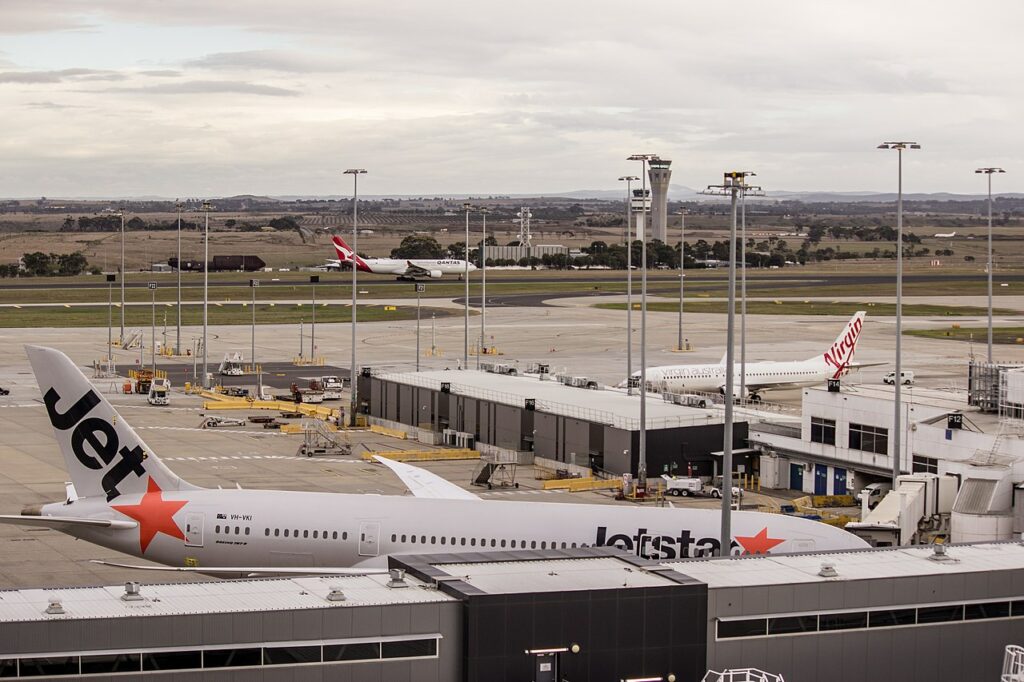The Australian Competition & Consumer Commission (ACCC) has released figures showing that Aussie domestic air fares have declined from historic highs at the end of 2022.
However, the latest report by the consumer watchdog reveals that airfare pricing still remains above 2019 pre-pandemic levels.
The quarterly report which was released by the commission today revealed that Australian domestic airfares hit a 15 year high in December 2022. Following that record peak, the price of discount fares only decreased by one third in real terms in January 2023.
“While it’s positive to see airfares fall from record highs in 2022, passengers are still generally paying more to fly today than they were before the pandemic,” ACCC Commissioner Anna Brakey said.
“Airfares typically come down after the Christmas travel peak due to a seasonal decrease in demand, however some of this reduction is also explained by the airlines increasing their seat capacity.”
The average revenue per passenger, which represents an average price across all fare types, declined by 13% in real terms between the high of December 2022 and January 2023.
Despite this drop, the average revenue per passenger actually remained 13% higher than it was in 2019.
Highest seat availability in six months
January 2023 did see a high for available seat capacity. Overall the Australian airline industry made 5.9 million seats available for travellers in January this year – this represents the highest availability level in more than six months.
In terms of relative airline performance, Qantas flew at 102 per cent of its pre-pandemic capacity, Virgin at 96 per cent and Jetstar at 84 per cent.
Despite the airlines increase capacity, this did not however translate into more passengers flying. In January, 4.4 million passengers flew within Australia, which is 89 per cent of pre-pandemic levels.
Higher capacity and a seasonal reduction in demand resulted in more empty seats, leading to a fall in the industry load factor from 83 per cent in October 2022 to 75 per cent in January 2023.
On-time performance
The ACCC report reveals that in general, airlines’ on-time performance improved in January 2023. Overall the industry reported 23.9% of flights arriving late in January.
Jetstar’s performance was relatively poorer than the stated average, reporting the highest rate of delayed (34.6 per cent) and cancelled (7.3 per cent) flights in January.
Overall, most airlines have improved their delay and cancellation rates over the past few months.
“The airlines generally managed to increase their levels of flying without significantly compromising their on-time performance,” Ms Brakey said.
“After extensive operational challenges for much of 2022, most airlines appear to be getting closer to their pre-pandemic capability.”
Domestic market share
Jetstar transported 26.9 per cent of all domestic passengers in January 2023, an increase of nearly four percentage points from the last quarter.
The budget carrier typically records an increase at this time of year when people are increasingly flying for leisure rather than business.
Qantas’ market share fell to 34.8 per cent and Virgin Australia had a market share of 33.4 per cent. Rex Airlines flew 4.9 per cent of all domestic passengers.
The Australian domestic market also welcomed a newcomer in January. Low-cost carrier Bonza became the first high-capacity passenger airline to enter the domestic market in 15 years.
Bonza is predominantly operating on previously unserved routes that connect regional centres to holiday destinations, allowing passengers to travel directly rather than via a major city.
The full copy of the ACCC report can be found here.









